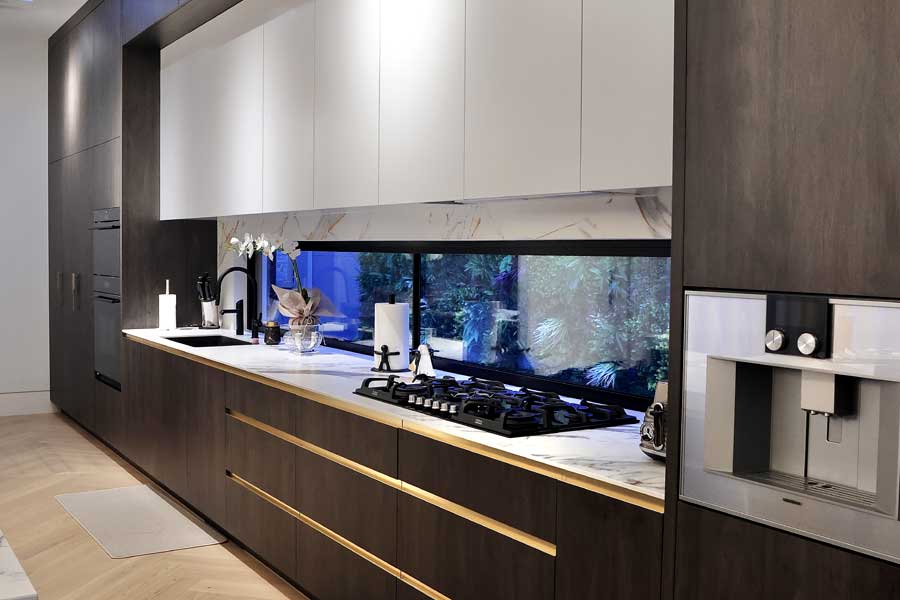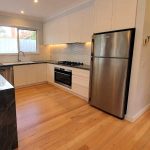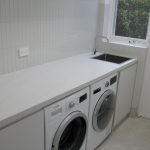Embarking on a kitchen renovation can be both exciting and overwhelming. With careful planning and attention to detail, you can transform your space into the heart of your home. In this guide, we will walk you through the essential steps involved in a successful kitchen renovation, from initial planning to adding the final touches. Whether you’re looking to update an outdated kitchen or create an entirely new design, following these steps will help ensure a smooth and stress-free renovation. Let’s dive into the key elements that will make your kitchen renovation a success.
- Step 1: Planning Your Kitchen Renovation
- Step 2: Setting a Budget
- Step 3: Hiring Professionals vs DIY
- Step 4: Demolition and Preparation
- Step 5: Plumbing and Electrical Work
- Step 6: Laying Down Flooring
- Step 7: Installing Cabinets
- Step 8: Installing Fixtures
- Step 9: Installing Benchtops
- Step 10: Adding the Final Touches
Kitchen Renovation Step by Step: The Ultimate Guide
Step 1: Planning Your Kitchen Renovation
The first step in any kitchen renovation project is planning. This includes deciding on the overall layout, the design you want to achieve, and any specific features you’d like to incorporate. Do you want an open-plan kitchen that flows into the rest of the house? Or perhaps you’re after a more compact kitchen with plenty of storage? This stage can take a lot of time, but it is essential for the success of your renovation.
Start by gathering inspiration from various sources such as online home improvement websites, Melbourne showrooms, and renovation magazines. Take note of what appeals to you and think about how it will fit into your home. Make sure to plan the placement of important elements like bench space, storage, and appliances.
Step 2: Setting a Budget
Setting a budget is crucial for a successful kitchen renovation. Whether you’re opting for a DIY renovation or hiring professionals, understanding your costs upfront will help avoid unexpected expenses. Research the average kitchen renovation costs in Melbourne, and don’t forget to factor in expenses for plumbing and electrical fixtures, cabinets, flooring, benchtops, and appliances.
Get multiple quotes from different contractors, and ensure you’re realistic about what you can afford. Keep a contingency budget for any unforeseen issues that might arise during the project.
Step 3: Hiring Professionals vs DIY
When it comes to a kitchen renovation, one of the big decisions is whether to hire professionals or opt for a DIY approach. While some people prefer to save on costs by doing certain tasks themselves, others hire licensed professionals to ensure the job is done right. DIY is a great option if you have experience with home renovations, but for plumbing and electrical work, it’s best to hire certified experts.
Professionals bring the advantage of skills and experience, which can save you a lot of time. However, Melbourne is home to a growing community of DIY renovators, and there are plenty of resources to help guide you through simpler tasks such as painting, cabinet assembly, or tiling.
Step 4: Demolition and Preparation
Before installing new elements, the old kitchen must be demolished. This step involves removing cabinets, countertops, appliances, and even flooring if necessary. You’ll also want to prepare the space for the new kitchen by addressing any structural issues or repairs. In some cases, Melbourne homes may have outdated plumbing or electrical systems that need upgrading before the renovation can proceed.
Demolition can either be done by professionals or as a DIY project. Make sure to follow safety protocols if you’re handling the demolition on your own.
Step 5: Plumbing and Electrical Work
Once your kitchen has been cleared out, it’s time to focus on the plumbing and electrical work. This is one area where it’s best to hire licensed Melbourne professionals, as improper installation can cause significant issues later on. At this stage, plumbing for sinks and dishwashers, as well as electrical work for lighting and appliances, should be completed.
It’s essential to make sure that all systems are up to code and designed for safety and efficiency. This step might take a lot of time, but it’s critical for a smooth kitchen renovation.
Step 6: Laying Down Flooring
Flooring is a key element in your kitchen renovation. Options like tile, vinyl, and hardwood are all popular choices. Each material comes with its advantages, whether it’s the durability of tiles or the warmth of hardwood.
If you’re considering DIY, vinyl and laminate flooring are easier to install. However, for tiles or hardwood, it’s best to get a professional to ensure a high-quality finish that will stand the test of time.
Step 7: Installing Cabinets
Cabinet installation is a significant part of any kitchen renovation. Not only do cabinets provide essential storage, but they also set the tone for your kitchen’s aesthetic. Whether you choose custom cabinetry, wrap materials, or prefabricated options, this step should be done with precision to ensure everything fits perfectly.
DIY enthusiasts can often handle the installation of cabinets, provided they have the proper tools and guidance. For those less inclined to DIY, hiring a cabinet installer will ensure that the job is completed quickly and professionally.
Step 8: Installing Fixtures
Once your cabinets are in place, it’s time to install fixtures such as taps, lighting, and handles. These elements are the finishing touches that bring everything together. While some fixtures, like taps, will require professional plumbing work, others, like lighting fixtures, can be handled by a licensed electrician or even DIY for simpler installations.
Step 9: Installing Benchtops
The benchtop is one of the most important elements of your kitchen. It’s where you’ll do most of your food preparation, and it needs to be both functional and stylish. Popular materials in Melbourne include stone, laminate, and wood, each with its own pros and cons. Stone benchtops are highly durable but come at a higher cost, while laminate is budget-friendly but may not last as long.
Professional installation is recommended for benchtops, especially for materials like stone that require precision cutting. A well-installed benchtop can significantly improve the look and functionality of your kitchen.
Step 10: Adding the Final Touches
With all the major elements in place, it’s time to add the final touches that will complete your kitchen renovation. These include installing splashbacks, painting, and adding any decorative elements such as plants, art, or new appliances. Melbourne homeowners often opt for glass or tile splashbacks, which are both durable and easy to clean.
This is your chance to personalise the space and make it feel like home. Don’t forget to clean up the space thoroughly and make any minor adjustments needed to ensure your kitchen is ready to use.
Finish Line
A kitchen renovation is a significant project that requires careful planning and execution. From setting a budget to installing cabinets and fixtures, each step plays a crucial role in creating your dream kitchen. Whether you choose to DIY or hire professionals, following these steps will ensure a smooth renovation process that leaves you with a functional and beautiful space. Remember to take your time, gather multiple quotes, and focus on the important elements that will improve the overall flow and utility of your kitchen. Melbourne homeowners have a wide range of options to suit any style and budget, so get started today and bring your kitchen vision to life!












